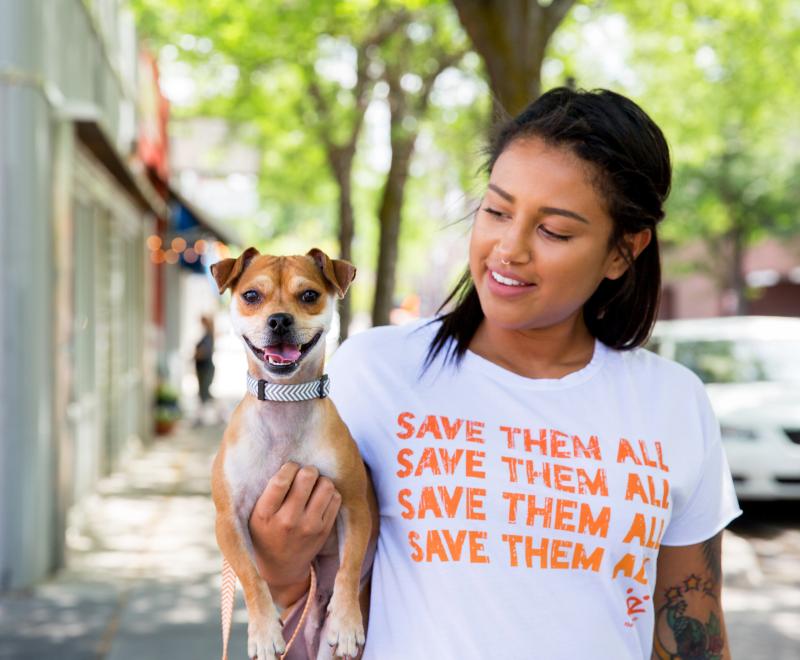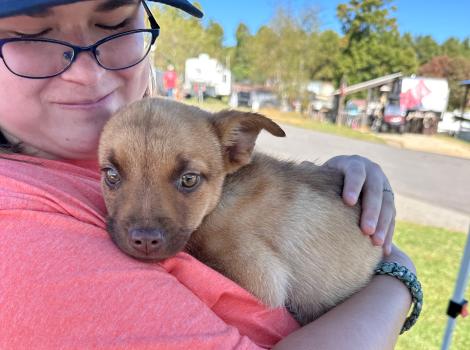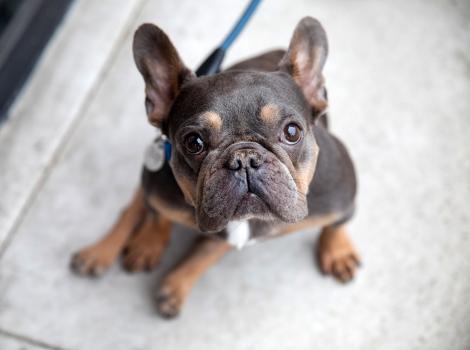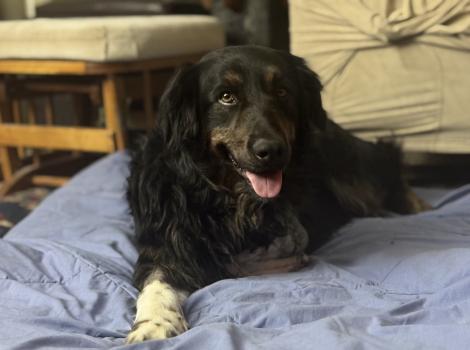How a Tennessee animal shelter is saving more pets

Mojo, the year-old black pup who arrived last July at the Rhea County Animal Shelter in Evensville, Tennessee, was in for a big surprise the day a man from the big city drove up to meet him. Stunned by an online post that showed how much Mojo looks like his dog who passed away last February, the man made the 50-mile trip to the small Tennessee River Basin town (population 2,624). And today, Mojo is living the good life in Chattanooga.
Such stories are becoming more common in Rhea County, thanks to expanding programs that promote its many adoptable pets. It’s just one of the many changes at the shelter due to its participation in Best Friends’ national shelter embed program, made possible in part by a grant from Maddie’s Fund®.
Best Friends Animal Society’s goal is for animal shelters across the country to reach no-kill by 2025. Hands-on support where Best Friends staff work alongside shelter staff to assist them in reaching no-kill is just one of the ways we support our partners in reaching that shared goal.
“The folks there just needed a helping hand,” says Emily Lancione, a Best Friends employee embedded with the Rhea County staff. “And since I arrived in early summer, everyone has welcomed me with open arms. They’re so dedicated to doing great and amazing things for the animals.”
Renee Milner serves on the board of directors for the Animal Shelter Alliance of Rhea, a nonprofit organization that provides the shelter with fundraising and general lifesaving support. Renee says there was just something about Emily that clicked when the staff met her. “Since she joined us, we know that, in addition to providing leadership, she will jump in and do anything that needs to be done.”

Help with the basics
Emily’s presence is helping Rhea County implement proven strategies to help save more animals’ lives and move closer to no-kill. The staff has always worked diligently to save as many animals as possible. But prior to Emily’s arrival, some crucial items, such as community outreach, were out of necessity placed on the back burner.
“It was really just about me getting in there and finding out what needed to be done,” says Emily. “The first things we worked on were cats and cat housing. Then we took a look at medical protocols, helped establish daily staff checklists, started enrichment for the animals, and expanded community involvement.”

Doggy Day Out spearheads outreach
One of the shelter’s biggest challenges, says Emily, was having enough time for the staff to be visible in the community. “The shelter is kind of hidden away up here, so we began reaching out to potential community partners in nearby towns as well as Evensville — people who just didn’t know that help was needed.”
The Doggy Day Out program, the shelter’s first major outreach effort since it paused community activities during the COVID-19 pandemic, grew out of an idea from Emily, Renee, and shelter director Cheyenne Swafford attending the recent Best Friends National Conference in Houston. During a talk on community involvement and animal shelters, the presenter mentioned trusting the local community by inviting the public to interact with the animals.
Renee says: “We just looked at each other, and we were like ‘Yeah, that’s definitely something we have to try.’ We all talked about it, worked out the details, and it’s something we’re all excited to have in place.”
[Playgroups at Arkansas shelter let a shy dog shine]
With so many people taking advantage of the opportunity to come to the shelter and take a dog out for a walk, Doggy Day Out has become a very popular attraction. “We’re getting people from all walks of life,” says Emily. “And most animals have found a home within a week or two of going on their adventure.”
New emphasis on social outreach is closely linked with Doggy Day Out. For example, a black pup named Patrick, who had been at the shelter for six months, caught the eye of an adopter. Patrick was only 2 months old when he arrived with his litter back in February. He was recently adopted by a Doggy Day Out visitor who stopped by to take him for a walk. That’s all it took.
Then there’s Pet Publicist, a new outreach program that involves students from Rhea County High School, which is just down the hill from the shelter. It gives high schoolers the opportunity to come in, meet the animals, and then use their social media platforms to promote them for adoption. The program is also being made available to the general public.

Thinking outside the box
Renee says that perhaps the biggest embed contribution so far has been freeing staff to expand thinking when it comes to animal welfare issues by considering new ways to save more lives. “Before we started working with Best Friends, we had all these great ideas but not a lot of time or resources to get them funded and implemented. That’s where Emily has been so helpful. Now we don’t just have ideas, but we also have someone who can help us plan and get those ideas grounded so they can grow and be sustained.”
Expanding its base of volunteers is another area of growth. “They were a little hesitant about this at first,” Emily says. “But now the staff is starting to ask questions like: ‘Why can’t we send this fractious little kitten out to foster instead of her sitting here?’ Recently, we sent out a big dog named Rubble to a foster home, and he’s doing incredibly well.”
Likewise, making it easier to return lost pets to families is another goal of the shelter. Return-to-home in the field — where animal services officers can scan microchips to find out where a lost pet lives and then return the pet home without going to the shelter — is becoming more common. Officers are getting to know residents and neighborhoods, even to the point of knowing where individual pets live.
“Recently we picked up a dog and after scanning him discovered his named was Chaos,” says Emily. “Well, without any fuss at all, we were able to return him to his home the same day.”

The future looks bright
Destiny Haney, Best Friends’ senior manager of national embed programming, says Rhea County’s save rates over the summer were well above what normally would be expected for an upstart program.
“From May through August, their save rate was 85%, up 38 percentage points from the same time period last year,” she says. “For the month of July, it was 97%. We’re now at 88%, and I think that shows that they are embracing change — something that’s not easy to do.”
[Q&A: Best Friends national shelter embed program]
The small changes being made at the shelter, along with the promise of additional staffing, have proven to be a morale booster for the staff. Best Friends, through a grant, will be funding a new position of shelter operations manager. Things are looking up, says Renee. “Adding these new positions obviously helps morale, but adding in the fact that we’re seeing a difference for the animals — that always makes everybody feel good.”
There’s more: Thanks to a $650,000 gift bequeathed to the Animal Shelter Alliance of Rhea, plans are in motion for a new 5,000-square-foot building that will be connected to the current 4,200-square-foot facility.
“We have very little staff, but we’ve always had big ideas,” says Renee. “And I feel like that’s why Best Friends picked us for the program. Our employees are highly motivated, but the embed program has provided us with a road map to where we’re becoming better equipped to move forward and achieve our goals.”

Let's make every shelter and every community no-kill by 2025
Our goal at Best Friends is to support all animal shelters in the U.S. in reaching no-kill by 2025. No-kill means saving every dog and cat in a shelter who can be saved, accounting for community safety and good quality of life for pets.
Shelter staff can’t do it alone. Saving animals in shelters is everyone’s responsibility, and it takes support and participation from the community. No-kill is possible when we work together thoughtfully, honestly, and collaboratively.






